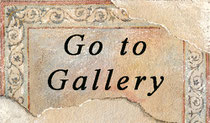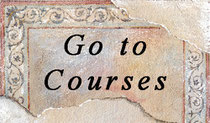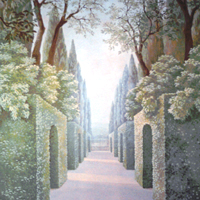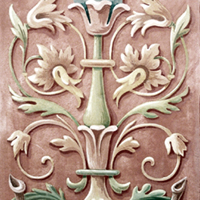FRESCOES, look below the complete Gallery

The fresco technique is both ancient and complex. In begins with an application of fresh plaster. Natural pigments are applied during the drying process. The lime in the plaster binds the pigments and the colours become more vivid. To transpose the painting on to canvas we use a technique called the "snatch technique". The "snatch technique" is also used by restorers. All of the images below create an atmosphere reminiscent of the distant past. Frescos effects can also be created using a technique that mimics the passing of time on the painting, making it look older. For this reason each image can be painted as “True Fresco” or “False Fresco”.
If you like figurative painting we suggest you also visit the pages
Scenery and Trompe l'Oeil
To transform the rooms with the color and ornament, visit Decorations
Bathers (inspired by Bernardino Luini)
Frieze and walls with broken colour effect
Faces (inspired by Michelangelo)
Still Life
Frescoes inspired by
Giulio Romano, Correggio and Antonio Pellegrini
Roman Bathroom
Liberty Ceiling
Berseau
Antique Damask
Persian Frieze
Neo-Gothic Ceiling
Frieze with Acanthus
Fireplace
Festoons and Palmettes
Striped Base
Cross Vault
Arabesque for Wardrobe
Arabesques in Bunches
Beam Decorations
If you like figurative painting we suggest you also visit the pages
Scenery and Trompe l'Oeil
To transform the rooms with the color and ornament, visit Decorations

















































































